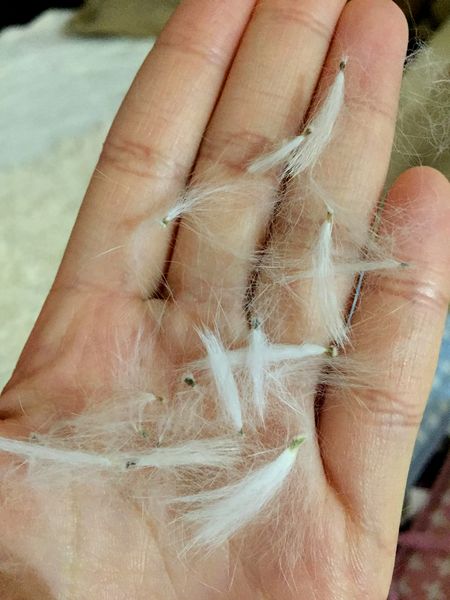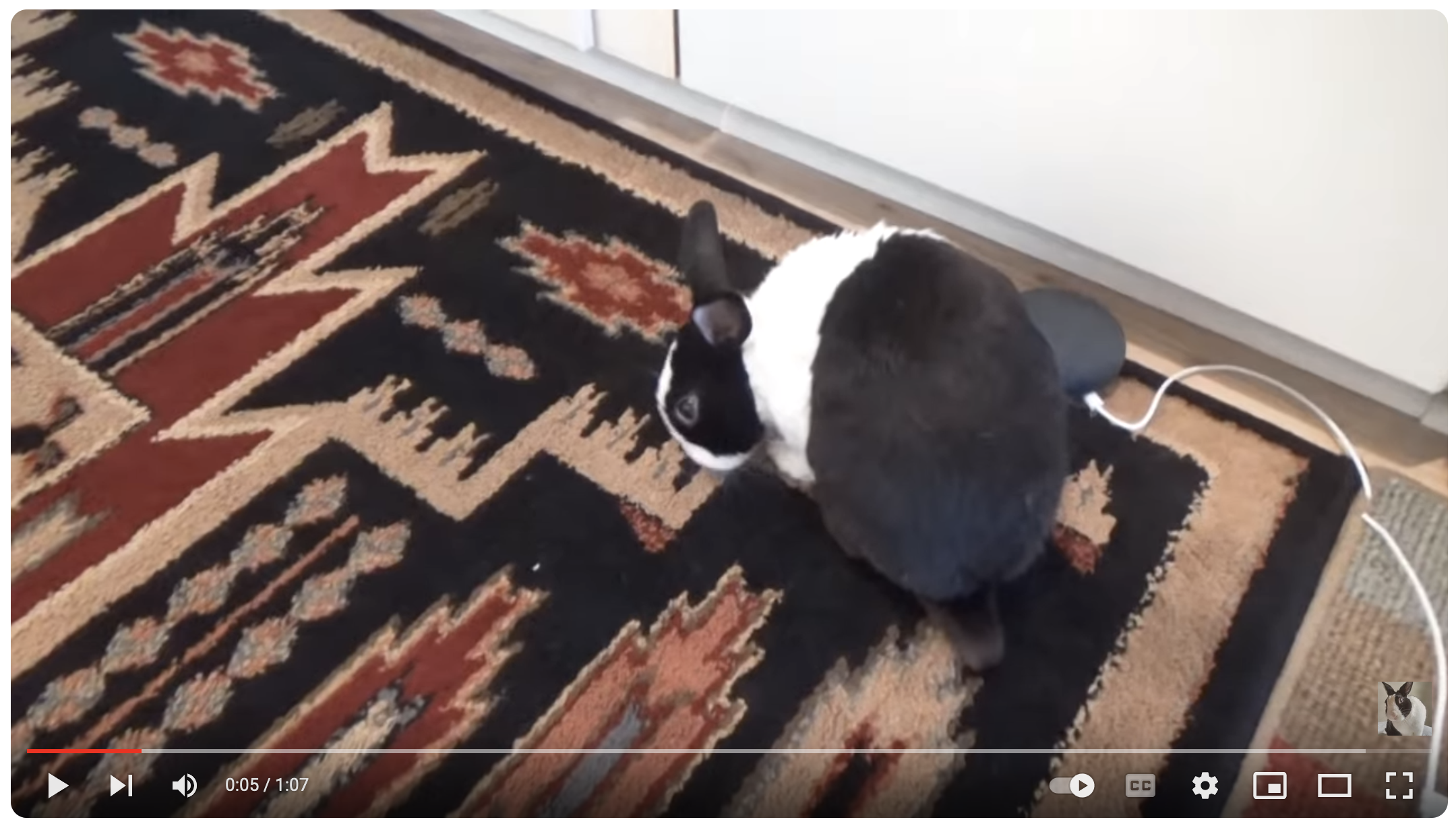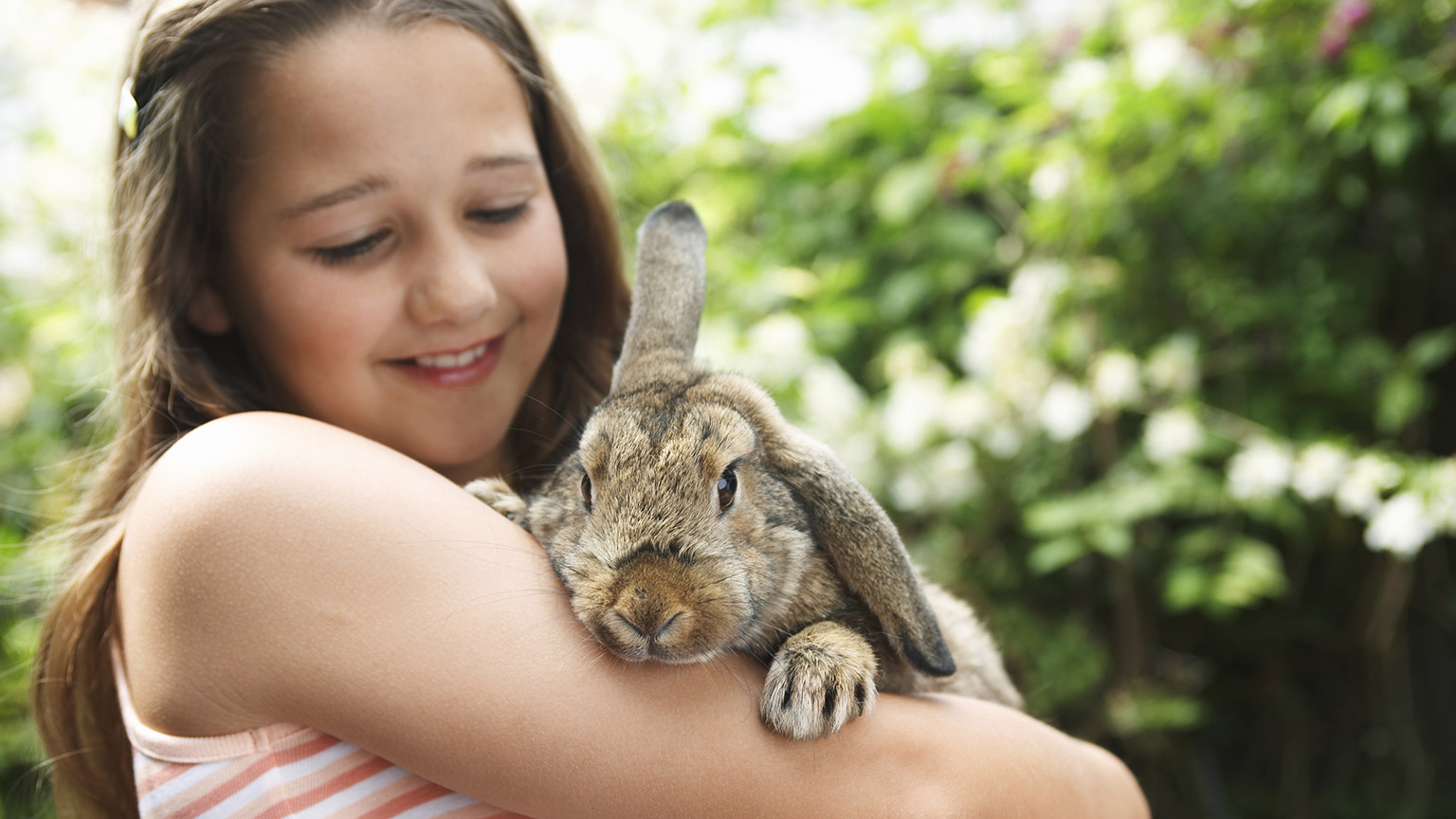In this topic we are going to cover:
- Rabbit coat types and colours
- Rabbit breed groups
Scientists who have looked at rabbit DNA suggest that all domestic rabbits descend from wild Oryctolagus cuniculus cuniculus rabbits in the southern area of France. The process of domestication is much more recent for rabbits than for dogs or cats. While historical records show that rabbits have been kept in cages since Roman times, this was primarily for their meat and fur. Domestication is thought to have begun in the 1500s, and the breeding of rabbits as pets in the 1700s. The first breeder organisations were established in the 1900s. Today rabbits are one of the most popular pet types as they can be toilet trained and adapt well to an indoor lifestyle.
Male rabbits are known as bucks. Female rabbits are known as does. Baby rabbits are kits. An old-fashioned word for rabbit is coney. A group of rabbits in the wild is known as a colony, whereas some breeders call groups of domestic rabbits the informal term ‘fluffle’. Informally, rabbits are often called bunny rabbits, bunnies, or buns for short.
Watch: The History of Rabbits (8:01 Minutes)
Post-watch Question
What surprised you about rabbits while watching this video? Make notes.
Fur Layers
Rabbit fur typically has three layers like cat fur, but like cats some rabbit breeds may not have all three layers. The layers are:
- Down hair – a short very fine layer of hair that is close to the skin and provides insulation to keep the rabbit warm.
- Guide hair – a long, rough hair that forms a protective outer layer.
- Guard hair – medium length hairs that guard the guide hair.
All of these hairs grow from single hair follicles in the rabbit’s skin. For each follicle (depending on the breed) there are:
- Up to sixty (60) down hairs
- Up to four (4) guard hairs
- A single guide hair
New rabbit owners are often surprised when at molting time (rabbits molt twice a year), the hair seems to come out in tufts. This is because of the structure of the hair follicle as we have just discussed. 
Source: Hair – WabbitWiki
Direction of Fur
There are four (4) ways that the layers of hair sit on the rabbit’s skin.
- Fly back coat where the hair lies smoothly over the body and returns quickly to this pattern if the rabbit is stroked from tail to head.
- Roll back coat where the hair lies smoothly over the body but returns slowly to this pattern if the rabbit is stroked from tail to head.
- Stand-up coat where the hair lies smoothly over the body but will stay upright if the rabbit is stroked from tail to head.
- Up-right coat where the natural way the hair sits is permanently upright, rather than lying smoothly over the rabbit’s body.
Types of Fur
- Normal fur, which includes the four (4) fur directions listed above.
- Rex fur, where each hair follicle contains the maximum number of the three (3) hair types listed above. Fur direction is always permanently upright which gives a very thick and plush coat.
- Satin fur, where the hair shafts are thin, fine and almost transparent which gives the coat a very shiny appearance.
- Wooly or angora fur where the hairs are long, fine, soft and light-weight and can be spun and knitted into warm garments.
- Combination fur, which is usually a mix of wooly fur in ruffs around the head, neck and hind quarters and normal fur covering the rest of the body.
The two basic colours of rabbit fur are black and yellow. All other colours are shades, dilutes or colour bandings or patterns of hairs of these two base pigments. If the rabbit is missing the genes for either the black pigment or the yellow, then the rabbit will be white. Wild rabbits tend to have the Agouti colouring.
The genetics behind rabbit coat colour are very complex, so we won’t go into detail here, but you do need to know that rabbit coat colours and patterns are connected via combinations of genes that are difficult to put into simple lists.
Tip
There is a strong relationship between fur colour and eye colour in rabbits.Black Colouring
- Black
- Brown/Chocolate
- Blue (diluted black)
- Lilac (diluted Brown/Chocolate)
Yellow Colouring
- Tan (dark red to cream)
Patterns
- Agouti (alternating black and yellow banded colours on individual hairs).
- Chinchilla (an agouti pattern where the yellow band is replaced by white).
- Himalayan (a pattern with white fur on the body and dark ears, nose, feet, and tail).
- Steel (an agouti pattern where the base of the hair is dark, but hair tips are either gold or silver.
- Brindle (individual hairs are either black or yellow-based and mixed across the rabbit’s body).
- Self (single or solid colour), which can be black or yellow-based depending on the combinations of genes.
- Broken (with patches of colour over the body).
- Harlequin (two colours).
- Tricolour (two colours plus white).
- Silvering (solid white hairs are mixed in with hairs of a darker colour).
- Albino (solid white colour).
Activity
Use the arrow buttons to move through the following slides displaying rabbit fur patterns.
As with cats and dogs, depending on the country and the breeding organisation different numbers of rabbit breeds will be recognised. Around the world there are at least 305 breeds according to Wikipedia (Ref: List of rabbit breeds - Wikipedia).
Before looking at the breed groups it will help you to understand some of the words used in naming rabbits.
- Lop means the rabbit has ears that droop instead of sitting upright.
- Dwarf means the rabbit is very small in size.
- Rex means the rabbit has short, very soft fur with none of the longer guide hairs.
- Giant means the rabbit is very large.
- Angora means long-haired.
- Cashmere means medium long-haired.
Paired with the words ‘lop’, ‘dwarf’, ‘rex’ or ‘giant’ part of the name, you will often see a country or region as part of the name.
- Flemish Giant
- Netherland Dwarf
- Holland Lop
- California Rex
Rabbits are generally typed as either:
- Fancy Breeds
- Commercial or Fur Breeds (bred for their meat or their fur or both)
- Rex Breeds
Within these types, breeding and showing organisations will have different classes based on forms and features. It can become rather complicated!
Fancy Breeds
Here are some example Fancy breeds, but there are many more than just this list:
- Angora rabbit
- Dutch rabbit
- Flemish Giant
Commercial or Fur Breeds
Here are some example Commercial or Fur breeds, but there are many more than just this list:
- New Zealand White
- Californian White
Rex Breeds
Here are some example Rex breeds, but there are many more than just this list:
- The Standard Rex
- Mini Rex
- Plush Lop
Rabbits are a herbivorous (plant-eating) prey species, and their physical form reflects this. Key characteristics of the rabbit form include:
- Long ears for enhanced hearing to escape from predators.
- Strong and long hind legs for running, jumping, dodging and kicking to escape from predators.
- Shorter front legs for digging burrows and finding food.
- Eyes on either side of their heads to give them almost 360 degrees of vision to help escape from predators.
- Light bone structure to give them a speed advantage, and a flexible spine for running, jumping, digging and kicking.
- A short tail with colour markings that are designed to confuse predators.
- Continuous growing incisor teeth for grasping, tearing and slicing plant-based food.
- Rear molar teeth for grinding food.
Rabbit Function
Domestic rabbits have either been bred for their looks or their fur and meat or both rather than to perform a work-related role in the way that dogs have been bred.
When it comes to things like temperament and suitability as pets, rabbits are more uniform in their behaviors than dogs or cats. However, different breeds do have different characteristics. Flemish Giants are known to be relaxed and easy going, whereas Netherland Dwarves are known for having an aggressive personality that is in contrast to their small size.
Any rabbit can make a good pet, especially if they are handled properly, but individual rabbits will still have their own distinct personalities.
Some things to consider if you are thinking of getting a companion rabbit:
- They are capable of aggressive behaviour.
- They scare or startle easily and may take a really long time to get used to living with humans.
- They show affection on their own terms and are not always cuddly pets despite how cute they look.
- They are better in groups than as single pets and pairs will form bonds that will be more affectionate with each other than they are with their humans.
- They shed twice a year and can become irritable when shedding (possibly the process of shedding makes them itchy).
- They can be trained to enjoy grooming.
- They are strongly hormonal with does becoming irritable depending on her fertile period and bucks showing excessive sexual behaviour (will attempt to mate with anything that is available).
- Spaying and neutering is the best way to improve difficult rabbit behaviour related to hormones.
- Once confident in their surroundings they can be curious and confident, and they will mark (scent with their glands) and chew anything and everything in your house.
Case Study - Spicy Hay
Kai has had an unexpected incident with one of their rabbits and has posted online to find out why.Post

Activity
Can you answer Kai’s questions? The information we have just covered about rabbits and their forms and functions might give you some clues to why Freya ate the ‘spicy hay’.
Make a note of why you think she might have done this, then do some research online to see if your ideas were right.
Summary
Many of the words that we use to talk about rabbit coats, colours and patterns are similar to the kupu we have used with dogs and cats, but we have included a few ‘rabbit’ only terms for you to remember. We’ve also talked a lot about how rabbit form and function is related to them being prey animals in the wild. We’re now going to move on to pocket pets, which also share a lot of vocabulary that we use with rabbits. Tau kē!
